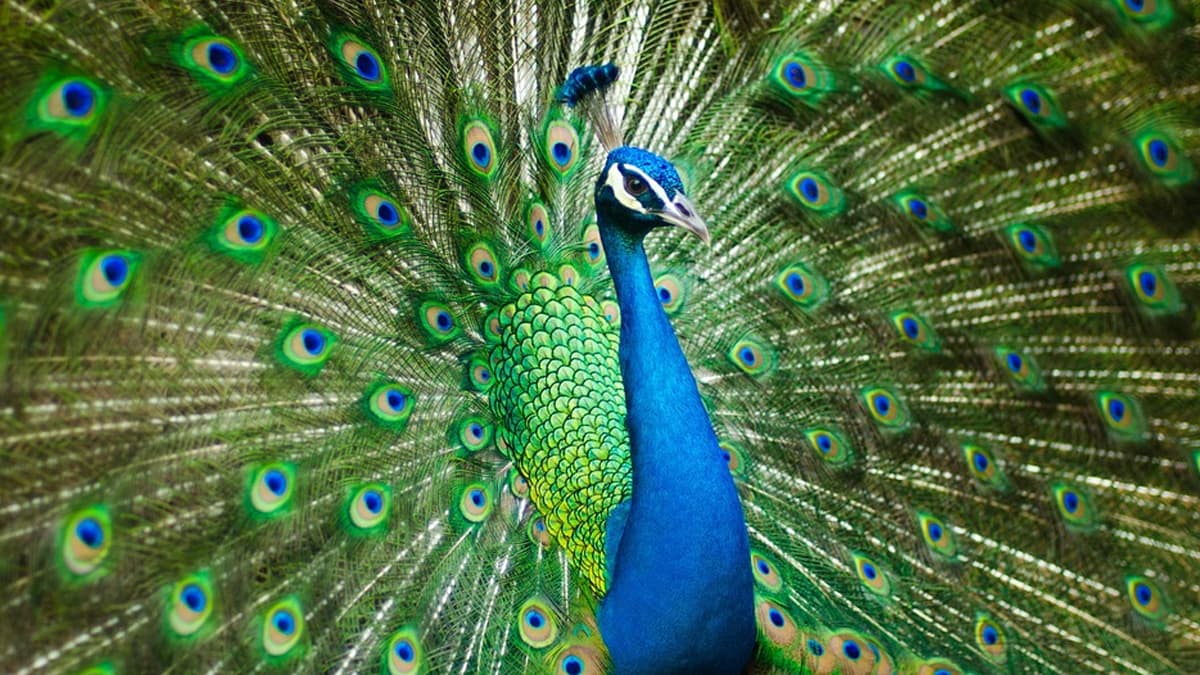Scientists Shocked as Peacock Feathers Emit Real Laser Beams in First-Ever Animal Biolaser Discovery
The Stunning Moment Science Met Magic: Peacock Feathers Emit Real Laser Light
In a discovery so astonishing it sounds like science fiction, scientists have confirmed that the feathers of peacocks—those dazzling symbols of beauty and elegance—can emit real laser beams.
Yes, actual laser light, glowing in a brilliant yellow-green hue, has been observed shooting from the feathers of this magnificent bird. And in doing so, the peacock has become the first known animal in the natural world to generate a biolaser—a groundbreaking feat that could forever change the fields of bio-optics, photonics, and even medical diagnostics.

The Moment of Discovery
Researchers working on bio-photonic materials were experimenting with a special laser dye, commonly used to create artificial laser light in lab settings. When they applied this dye to the peacock’s eyespots—those mesmerizing circles in the tail feathers—and exposed them to pulses of light, something incredible happened:
The feathers responded not just by glowing, but by amplifying the light into a narrow, coherent beam—a laser.
And it wasn’t a fluke.
The feathers acted as a natural laser cavity, echoing and amplifying light through their microscopic structural arrangement, a function previously only observed in man-made environments.
What Makes the Peacock So Special?
The source of this natural laser lies within the complex nanostructures found in the colorful “eyespots” of peacock feathers. These microscopic arrays of melanin rods and keratin layers are designed by evolution to diffract light and create iridescent patterns—but now we know they do more.
These structures trap light, bounce it around at precise angles, and when energized with external light (like the dye and pulse setup), the result is a laser beam.
It’s essentially a living photonic crystal, something optical scientists spend years trying to engineer in labs. The fact that a bird evolved it naturally is not only mind-blowing—it may reshape how we design light-emitting materials and lasers in the future.
A New Era of Bio-Optics Begins
The implications of this discovery stretch far beyond curiosity.
Imagine medical devices that mimic the peacock feather’s lasing effect to detect viruses or cancer cells. Tools that use the same microstructures to identify dangerous molecules in blood samples—or wearable sensors that monitor health using light instead of electronics.
This isn’t just nature’s party trick. It’s the blueprint for tomorrow’s tech.
“Nature just handed us a working model of something we’ve been trying to create artificially for years,” said one of the researchers involved. “We’ve always been fascinated by the peacock’s colors, but we didn’t realize they were hiding a laser system in plain sight.”
What’s Still Unknown
Although scientists have now seen the lasing effect in action, the exact mechanism of how the peacock’s nanostructures achieve such precision remains a mystery.
Questions remain:
-
Is this laser activity present in all peacocks, or only certain genetic variants?
-
Could the laser effect have a biological purpose—perhaps in mating or communication?
-
Is the peacock the only species capable of this, or could other birds or insects have similar hidden powers?
Now that the first animal biolaser has been found, a new wave of exploration is underway.
Why This Changes Everything
Nature continues to humble science. Just when we think we’ve reached the edge of discovery, a bird struts by and shoots a laser from its tail.
This finding reminds us that the natural world holds technologies far ahead of our own—and sometimes, the answers to futuristic innovations are sitting in the forest, quietly glowing under sunlight.
From bio-inspired sensors to laser medical imaging, the humble peacock has just become the unlikely hero of the optics revolution.
Source:
Original scientific study findings and coverage adapted from recent peer-reviewed journals and science news outlets.